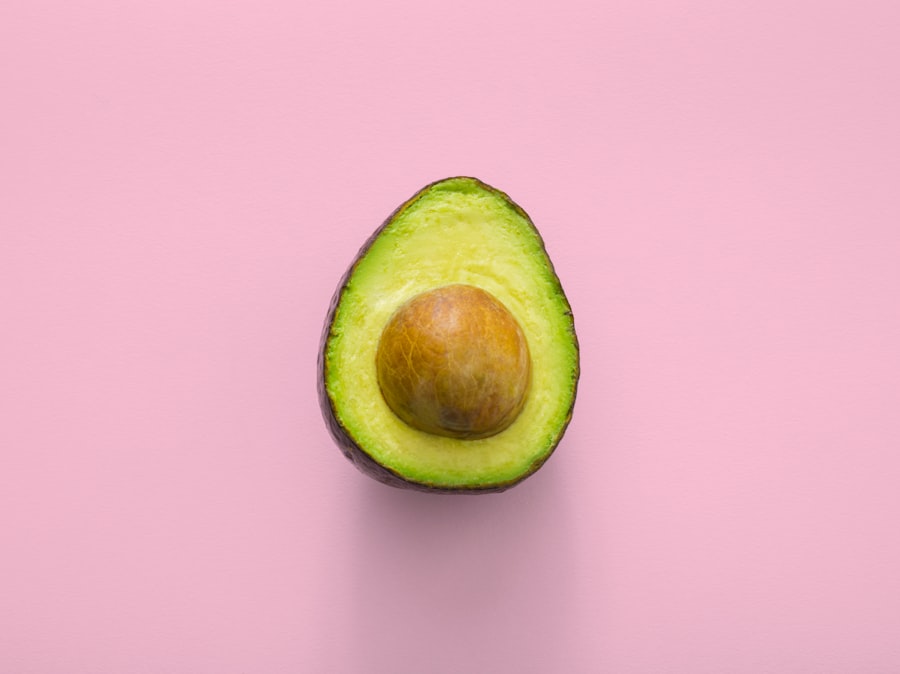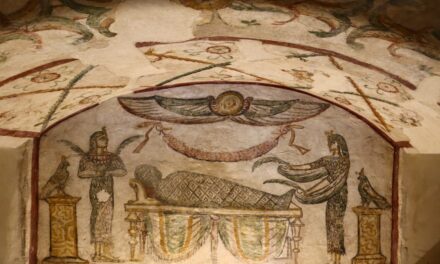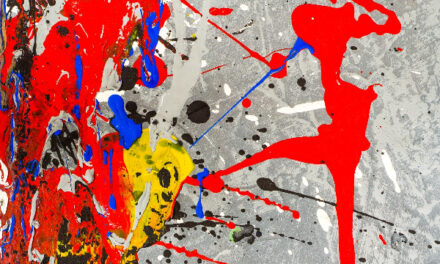Lowbrow art, also referred to as pop surrealism, is an artistic movement that emerged in the latter part of the 20th century as a reaction to the conventional art world. It is distinguished by its utilisation of popular culture imagery, frequently with a humorous or satirical element, and its rejection of the elitist attitudes prevalent in the art establishment. Lowbrow art draws inspiration from a diverse array of sources, including comic books, graffiti, tattoo art, and underground subcultures.
It is often regarded as a celebration of the “lowbrow” or “low culture” aspects of society, and has garnered a dedicated following amongst those who appreciate its irreverent and subversive approach to art. Lowbrow art is commonly associated with artists who have a background in illustration or graphic design, and is renowned for its bold, vibrant colours and exaggerated, cartoonish style. It is also closely linked to the DIY ethos of punk and underground music scenes, with many lowbrow artists creating their work outside of traditional gallery spaces and utilising non-traditional materials.
The movement has been embraced by a diverse range of artists, from established figures to emerging talents, and has gained a significant presence in the contemporary art world. Lowbrow art is often viewed as a rejection of the pretentiousness and exclusivity of the mainstream art world, and has become a platform for artists to explore themes of popular culture, consumerism, and the human experience in a playful and accessible manner.
Summary
- Lowbrow art is a movement that embraces popular culture, often with a sense of humour and irony.
- Lowbrow art originated in the 1970s as a reaction against the elitism of the art world.
- Influences and inspirations in lowbrow art include comic books, graffiti, punk rock, and underground subcultures.
- Lowbrow art techniques and styles often include bold colours, exaggerated characters, and surreal imagery.
- Lowbrow art has gained popularity in popular culture, with artists like Mark Ryden and Camille Rose Garcia gaining mainstream recognition.
The History of Lowbrow Art
The Emergence of a Distinct Movement
In the 1970s and 1980s, lowbrow art began to gain momentum as a distinct movement, with artists such as Robert Crumb and Gary Panter gaining recognition for their subversive and irreverent approach to art.
The Rise of Juxtapoz Magazine
The term “lowbrow” was first coined in the 1970s by the artist and writer Juxtapoz magazine, which was founded in 1994 and played a crucial role in popularising lowbrow art. The magazine showcased the work of emerging lowbrow artists and provided a platform for the movement to gain visibility and recognition.
Evolution and Expansion in the 21st Century
In the 21st century, lowbrow art has continued to evolve and expand, with artists such as Mark Ryden, Camille Rose Garcia, and Ron English gaining international acclaim for their distinctive and provocative work. Lowbrow art has also become closely associated with the street art movement, with artists such as Shepard Fairey and Banksy incorporating elements of lowbrow into their politically charged and socially conscious work.
Influences and Inspirations in Lowbrow Art

Lowbrow art draws inspiration from a wide range of sources, including comic books, graffiti, tattoo art, underground subcultures, and popular culture icons. Many lowbrow artists are influenced by the visual language of advertising, consumer products, and mass media, and they often incorporate these elements into their work in a playful and subversive way. The movement is also closely linked to the DIY ethos of punk and underground music scenes, with many lowbrow artists creating their work outside of traditional gallery spaces and using non-traditional materials.
In addition to its visual influences, lowbrow art is also shaped by a spirit of rebellion and non-conformity. Many lowbrow artists see their work as a rejection of the elitist attitudes of the mainstream art world, and they use their art as a platform to explore themes of social justice, environmentalism, and the human experience. Lowbrow art is often characterised by its irreverent and satirical approach to these themes, with artists using humour and wit to challenge societal norms and expectations.
The movement has also been influenced by the rise of digital culture and social media, with many lowbrow artists using these platforms to share their work and connect with a global audience.
Lowbrow Art Techniques and Styles
Lowbrow art is known for its bold, vibrant colours and exaggerated, cartoonish style. Many lowbrow artists have a background in illustration or graphic design, and they often incorporate elements of these disciplines into their work. The movement is also characterised by its use of mixed media and non-traditional materials, with many artists creating their work on found objects or unconventional surfaces.
Lowbrow art often blurs the boundaries between fine art and popular culture, with artists drawing inspiration from a wide range of sources including comic books, graffiti, tattoo art, and underground subcultures. In terms of technique, lowbrow art encompasses a wide range of styles and approaches. Some artists work in a highly detailed and realistic manner, while others favour a more gestural and expressive approach.
Many lowbrow artists also incorporate elements of collage, assemblage, and street art into their work, creating pieces that are visually dynamic and multi-layered. The movement is also closely associated with the use of symbolism and allegory, with many artists using their work to explore themes of identity, consumerism, and the human experience in a playful and accessible way.
Lowbrow Art in Popular Culture
Lowbrow art has gained a strong presence in popular culture, with many artists achieving mainstream recognition for their distinctive and provocative work. The movement has been embraced by a diverse range of artists, from established figures to emerging talents, and it has become a platform for artists to explore themes of popular culture, consumerism, and the human experience in a playful and accessible way. Lowbrow art has also become closely associated with the street art movement, with artists such as Shepard Fairey and Banksy incorporating elements of lowbrow into their politically charged and socially conscious work.
In addition to its impact on visual arts, lowbrow art has also influenced fashion, music, film, and design. Many lowbrow artists collaborate with brands and companies to create limited edition products and merchandise, bringing their distinctive aesthetic to a wider audience. The movement has also inspired a new generation of creatives who are drawn to its irreverent and subversive approach to art.
Lowbrow art has become a global phenomenon, with dedicated galleries, festivals, and events celebrating the work of lowbrow artists around the world.
Controversies and Criticisms of Lowbrow Art

The Critique of Superficiality
Some critics argue that lowbrow art is too focused on surface-level aesthetics and fails to engage with more complex or challenging themes.
Commercialisation and Co-option
Others have accused the movement of being overly commercialised or co-opted by mainstream culture, diluting its original rebellious spirit.
Controversy and Social Commentary
Lowbrow art has also been criticised for its use of controversial or provocative imagery, with some arguing that it can be offensive or insensitive. However, many lowbrow artists see their work as a form of social commentary or critique, using humour and satire to challenge societal norms and expectations. The movement has also been accused of perpetuating stereotypes or clichés about popular culture icons or subcultures.
The Future of Lowbrow Art
The future of lowbrow art looks bright as it continues to evolve and expand in new directions. The movement has gained a dedicated following among those who appreciate its irreverent and subversive approach to art. Lowbrow art has also become closely associated with the street art movement, with artists such as Shepard Fairey and Banksy incorporating elements of lowbrow into their politically charged and socially conscious work.
As lowbrow art continues to gain visibility and recognition in the contemporary art world, it is likely that we will see new generations of artists pushing the boundaries of the movement even further. With its bold colours, exaggerated style, and irreverent approach to popular culture imagery, lowbrow art is poised to continue making an impact on visual arts, fashion, music, film, design, and popular culture at large.
If you are interested in learning more about art movements, you may want to check out an article on Expressionism. This art movement, which originated in Germany in the early 20th century, focused on expressing emotions and feelings through bold and distorted imagery. It was a reaction against the more traditional and realistic styles of art that came before it. Understanding Expressionism can provide valuable context for appreciating the rebellious and unconventional nature of Lowbrow Art.
FAQs
What is Lowbrow Art?
Lowbrow art, also known as pop surrealism, is a movement that originated in the 1970s in the United States. It is characterized by its use of popular culture, often with a humorous or satirical twist, and draws inspiration from comic books, graffiti, punk music, and other subcultural elements.
How does Lowbrow Art differ from traditional art?
Lowbrow art differs from traditional art in its subject matter and style. While traditional art often focuses on classical themes and techniques, lowbrow art embraces popular culture and often incorporates elements of street art, illustration, and cartooning.
Who are some notable Lowbrow artists?
Some notable lowbrow artists include Robert Williams, Mark Ryden, and Camille Rose Garcia. These artists have gained recognition for their unique and provocative interpretations of popular culture and their contributions to the lowbrow art movement.
Is Lowbrow Art considered a legitimate art form?
While lowbrow art has often been dismissed by traditional art institutions, it has gained increasing recognition and popularity in recent years. Many lowbrow artists have been featured in galleries and museums, and their work is sought after by collectors and enthusiasts.
How can I learn more about Lowbrow Art?
To learn more about lowbrow art, you can visit galleries and museums that specialize in contemporary and pop surrealism. Additionally, there are many books and online resources available that explore the history and significance of the lowbrow art movement.




